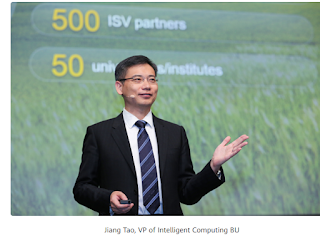Verizon introduced a Co Management service level for its SD WAN managed services portfolio.
 The self-service portal enables customers to define intents based on users, applications, sites and their WAN links, and then apply the intents to different policy objects based on business needs. Giving customers self-control of application policies enables them to be more agile and responsive to their specific business needs, and ultimately, therefore, will enhance the overall user experience. Any policies and configurations that are not supported in the Portal or via APIs are still managed by Verizon.
The self-service portal enables customers to define intents based on users, applications, sites and their WAN links, and then apply the intents to different policy objects based on business needs. Giving customers self-control of application policies enables them to be more agile and responsive to their specific business needs, and ultimately, therefore, will enhance the overall user experience. Any policies and configurations that are not supported in the Portal or via APIs are still managed by Verizon.
Verizon said the new capabilities will make it easier to manage individual vendor complexities and provide uniform, intent-based interfaces across multi-vendor platforms. This new level of service gives enterprise customers the ability to change SD WAN policies (for example, Application Aware Routing, Quality of Service) through either the Verizon Enterprise Center (VEC) self-service, policy management portal (Portal) or Verizon’s Application Programming Interface (API) platform.
“By adding Co Management to our managed services portfolio, we are giving enterprise customers the ability to define and implement their SD WAN policies across their location based on a rules-based engine, themselves,” said Vickie Lonker, Vice President of Product Management at Verizon. “We listen to customer feedback, understand industry trends and continue to develop innovative SD WAN solutions that can meet the needs of any business customer.”
Two minute video
SD-WAN continues to be a super high-growth area for Verizon. As enterprises undergo digital transformations, they are embracing SD-WAN because it provides the ability to manage to a business outcome.
Moreover, SD-WAN is fundamental for Zero Trust Networking. When you can virtualize functions and implement policy in coordination to SD-WAN you have the ability to better protect the enterprise.
Shawn Hakl, Senior VP of Business Products at Verizon, talks about why Verizon's customers are embracing SD-WAN technology.
http://www.nginfrastructure.com/sd-wan
 The self-service portal enables customers to define intents based on users, applications, sites and their WAN links, and then apply the intents to different policy objects based on business needs. Giving customers self-control of application policies enables them to be more agile and responsive to their specific business needs, and ultimately, therefore, will enhance the overall user experience. Any policies and configurations that are not supported in the Portal or via APIs are still managed by Verizon.
The self-service portal enables customers to define intents based on users, applications, sites and their WAN links, and then apply the intents to different policy objects based on business needs. Giving customers self-control of application policies enables them to be more agile and responsive to their specific business needs, and ultimately, therefore, will enhance the overall user experience. Any policies and configurations that are not supported in the Portal or via APIs are still managed by Verizon.Verizon said the new capabilities will make it easier to manage individual vendor complexities and provide uniform, intent-based interfaces across multi-vendor platforms. This new level of service gives enterprise customers the ability to change SD WAN policies (for example, Application Aware Routing, Quality of Service) through either the Verizon Enterprise Center (VEC) self-service, policy management portal (Portal) or Verizon’s Application Programming Interface (API) platform.
“By adding Co Management to our managed services portfolio, we are giving enterprise customers the ability to define and implement their SD WAN policies across their location based on a rules-based engine, themselves,” said Vickie Lonker, Vice President of Product Management at Verizon. “We listen to customer feedback, understand industry trends and continue to develop innovative SD WAN solutions that can meet the needs of any business customer.”
Next Gen SD-WAN: Driving digital transformation
Two minute video
SD-WAN continues to be a super high-growth area for Verizon. As enterprises undergo digital transformations, they are embracing SD-WAN because it provides the ability to manage to a business outcome.
Moreover, SD-WAN is fundamental for Zero Trust Networking. When you can virtualize functions and implement policy in coordination to SD-WAN you have the ability to better protect the enterprise.
Shawn Hakl, Senior VP of Business Products at Verizon, talks about why Verizon's customers are embracing SD-WAN technology.
http://www.nginfrastructure.com/sd-wan


















